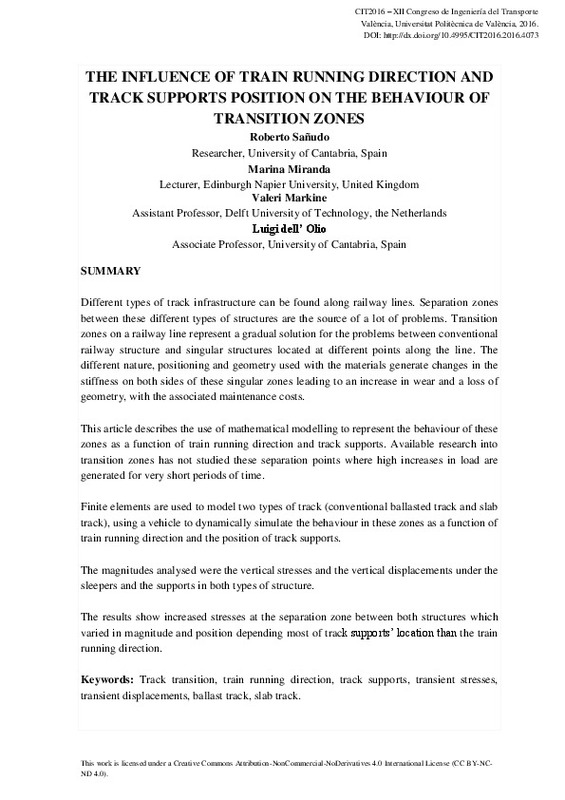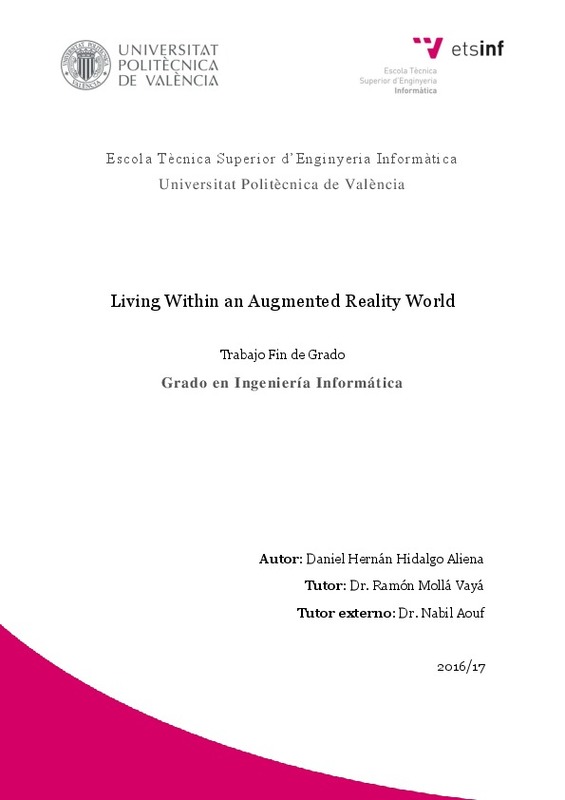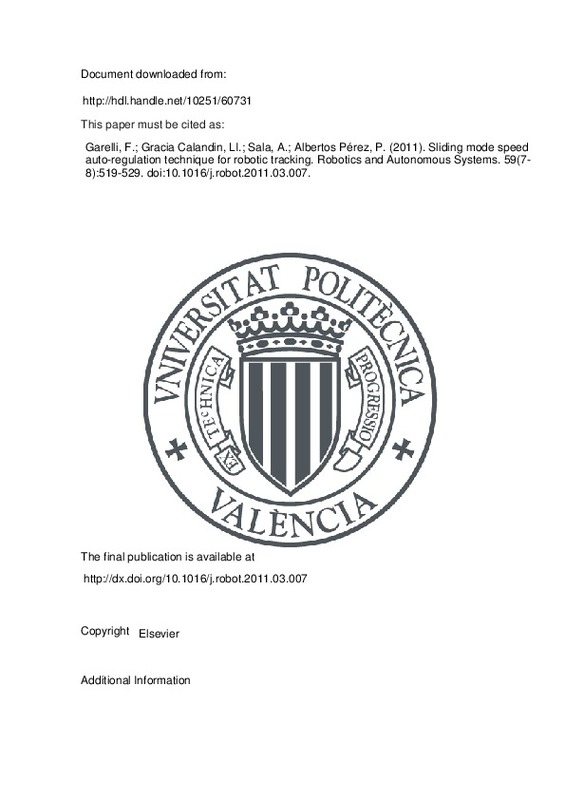JavaScript is disabled for your browser. Some features of this site may not work without it.
Buscar en RiuNet
Listar
Mi cuenta
Estadísticas
Ayuda RiuNet
Admin. UPV
THE INFLUENCE OF TRAIN RUNNING DIRECTION AND TRACK SUPPORTS POSITION ON THE BEHAVIOUR OF TRANSITION ZONES
Mostrar el registro sencillo del ítem
Ficheros en el ítem
| dc.contributor.author | Sañudo Ortega, Roberto
|
es_ES |
| dc.contributor.author | Miranda manzanares, Marina
|
es_ES |
| dc.contributor.author | Markine, Valeri
|
es_ES |
| dc.contributor.author | DELL'OLIO, LUIGI
|
es_ES |
| dc.date.accessioned | 2017-11-03T12:09:26Z | |
| dc.date.available | 2017-11-03T12:09:26Z | |
| dc.date.issued | 2016-06-01 | |
| dc.identifier.isbn | 9788460899600 | |
| dc.identifier.uri | http://hdl.handle.net/10251/90388 | |
| dc.description.abstract | [EN] Different types of track infrastructure can be found along railway lines. Separation zones between these different types of structures are the source of a lot of problems. Transition zones on a railway line represent a gradual solution for the problems between conventional railway structure and singular structures located at different points along the line. The different nature, positioning and geometry used with the materials generate changes in the stiffness on both sides of these singular zones leading to an increase in wear and a loss of geometry, with the associated maintenance costs. This article describes the use of mathematical modelling to represent the behaviour of these zones as a function of train running direction and track supports. Available research into transition zones has not studied these separation points where high increases in load are generated for very short periods of time. Finite elements are used to model two types of track (conventional ballasted track and slab track), using a vehicle to dynamically simulate the behaviour in these zones as a function of train running direction and the position of track supports. The magnitudes analysed were the vertical stresses and the vertical displacements under the sleepers and the supports in both types of structure. The results show increased stresses at the separation zone between both structures which varied in magnitude and position depending most of track supports’ location than the train running direction. | es_ES |
| dc.format.extent | 10 | es_ES |
| dc.language | Inglés | es_ES |
| dc.publisher | Editorial Universitat Politècnica de València | es_ES |
| dc.relation.ispartof | XII Congreso de ingeniería del transporte. 7, 8 y 9 de Junio, Valencia (España) | es_ES |
| dc.rights | Reconocimiento - No comercial - Sin obra derivada (by-nc-nd) | es_ES |
| dc.subject | Track transition | es_ES |
| dc.subject | Train running direction | es_ES |
| dc.subject | Track supports | es_ES |
| dc.subject | Transient stresses | es_ES |
| dc.subject | Transient displacements | es_ES |
| dc.subject | Ballast track | es_ES |
| dc.subject | Slab track | es_ES |
| dc.title | THE INFLUENCE OF TRAIN RUNNING DIRECTION AND TRACK SUPPORTS POSITION ON THE BEHAVIOUR OF TRANSITION ZONES | es_ES |
| dc.type | Capítulo de libro | es_ES |
| dc.type | Comunicación en congreso | es_ES |
| dc.identifier.doi | 10.4995/CIT2016.2015.4073 | |
| dc.rights.accessRights | Abierto | es_ES |
| dc.description.bibliographicCitation | Sañudo Ortega, R.; Miranda Manzanares, M.; Markine, V.; Dell'olio, L. (2016). THE INFLUENCE OF TRAIN RUNNING DIRECTION AND TRACK SUPPORTS POSITION ON THE BEHAVIOUR OF TRANSITION ZONES. En XII Congreso de ingeniería del transporte. 7, 8 y 9 de Junio, Valencia (España). Editorial Universitat Politècnica de València. 517-526. https://doi.org/10.4995/CIT2016.2015.4073 | es_ES |
| dc.description.accrualMethod | OCS | es_ES |
| dc.relation.conferencename | CIT2016. Congreso de Ingeniería del Transporte | es_ES |
| dc.relation.conferencedate | June 07-09,2016 | es_ES |
| dc.relation.conferenceplace | Valencia, Spain | es_ES |
| dc.relation.publisherversion | http://ocs.editorial.upv.es/index.php/CIT/CIT2016/paper/view/4073 | es_ES |
| dc.description.upvformatpinicio | 517 | es_ES |
| dc.description.upvformatpfin | 526 | es_ES |
| dc.type.version | info:eu-repo/semantics/publishedVersion | es_ES |
| dc.relation.pasarela | OCS\4073 | es_ES |











